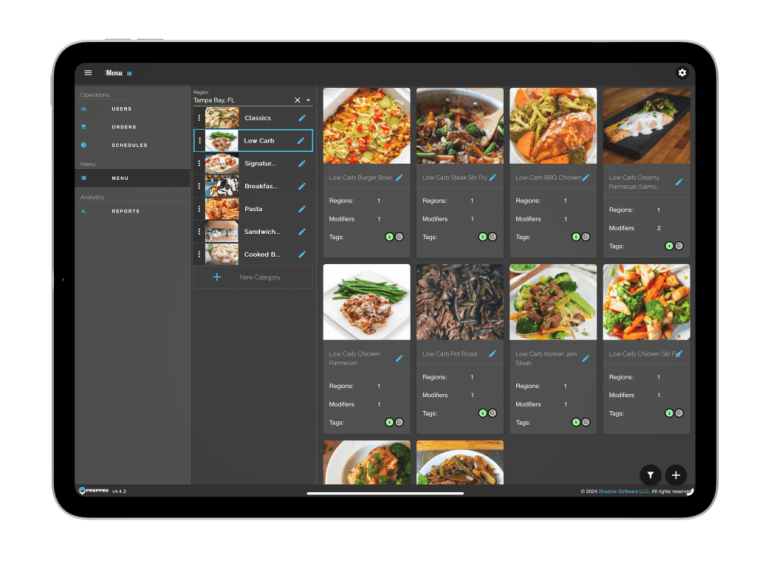Elevating Nutrition and Efficiency in Elder Care through Technology
Meal Planning Software in Assisted Living Facilities
For decision-makers in the eldercare industry, implementing innovative solutions that enhance service quality while optimizing operational efficiency is paramount. Assisted Living Meal Planning Software represents a transformative tool in managing dietary needs and meal preparations in assisted living settings. Its strategic application can lead to substantial improvements in resident satisfaction and significant cost savings.
Introduction to Meal Planning Challenges in Assisted Living and Cost-Benefit of Implementing Meal Planning Software in Assisted Living Facilities
Assisted living facilities, from small community residences to larger life care facilities, grapple with the daily complexities of meal preparation for diverse groups. Nutritional needs, personal preferences, and medical dietary restrictions must all be meticulously balanced. In this intricate food preparation matrix, traditional methods often fall short, making meal planning software not just helpful, but essential.
The Need for Specialized Meal Planning Solutions
In environments like Assisted Living Facilities and nursing homes, the stakes are particularly high when it comes to nutrition. Elder residents typically require diets tailored to manage chronic conditions and promote overall well-being. Moreover, the dining experience can significantly affect a resident’s quality of life, influencing their overall satisfaction with the care provided. Enter Assisted Living Meal Planning Software, a specialized tool designed to address these unique challenges.
What Is Assisted Living Meal Planning Software?
Assisted Living Meal Planning Software is a technological solution engineered to streamline the entire process of food planning, preparation, and management within eldercare environments. It is laden with features like personalized meal tracking, allergy alerts, nutrient analysis, and scalable recipe adjustment. This software not only assists in crafting dietitian-approved menus but also in adhering to individual health guidelines effortlessly.
Cost Analysis of Implementing Meal Planning Software
Understanding the cost structure is crucial when considering new technology. Initially, the software purchase, coupled with integration and staff training, may seem substantial. However, the long-term benefits—reduced food waste, increased staff efficiency, and improved resident health outcomes—paint a different picture. A detailed analysis often reveals potential savings outweighing initial costs, particularly when factoring in the reduced risk of dietary-related health issues.
Case Study: Success Stories from Implementation
Many assisted living facilities have documented positive transformations after integrating meal planning software. They report enhanced dietary satisfaction among residents, quicker meal service times, and a palpable decrease in food expenditure due to precise meal ingredient allocations. Celebrated as a “game-changer” by many nutritionists in elder care, these tools exemplify how digital advancements can pivotal transform daily operations.
Addressing Common Concerns with Meal Planning Software
The potential hurdles—such as user resistance and transition periods—may dissuade some facilities from adopting the software. Yet, experience shows that comprehensive training and phased implementation can alleviate much of the initial pushback. Ensuring the software interface is user-friendly, and demonstrating the tangible benefits can further smooth the transition.
Choosing the Right Software: Prepped Culinary Software
Among the myriad of options available, Prepped Culinary Software stands out. Tailored specifically for assisted living and care services, it handles everything from resident dietary profiles to real-time meal feedback. Facilities currently employing Prepped Culinary Software commend its intuitive design and robust functionality, making it an exceptional choice for those looking to invest.
The Future Is Bright with Meal Planning Technology
The ongoing evolution of meal planning technology promises even greater advancements in the handling of complex dietary needs in assisted living environments. As these tools mature, they will continue to foster a nurturing, efficient, and health-focused dining environment, essential to the ethos of progressive elder care.
To conclude, Assisted Living Meal Planning Software like Prepped Culinary Software offers an invaluable resource. It leads to operational efficiencies, enhances dietary service quality, and ensures compliance with nutritional standards, which are crucial for enhancing the life quality of senior residents in assisted living settings.
For any facility committed to elevating their standard of care and operational proficiency, embracing this technology isn’t just a good decision—it’s an indispensable step forward.
—
This comprehensive foray into the benefits and pragmatic considerations associated with Assisted Living Meal Planning Software aims at aiding owners and managers in making informed decisions, not only to streamline operations but also to significantly improve the quality of life for their residents, making it a worthy investment in the future of assisted living care.











